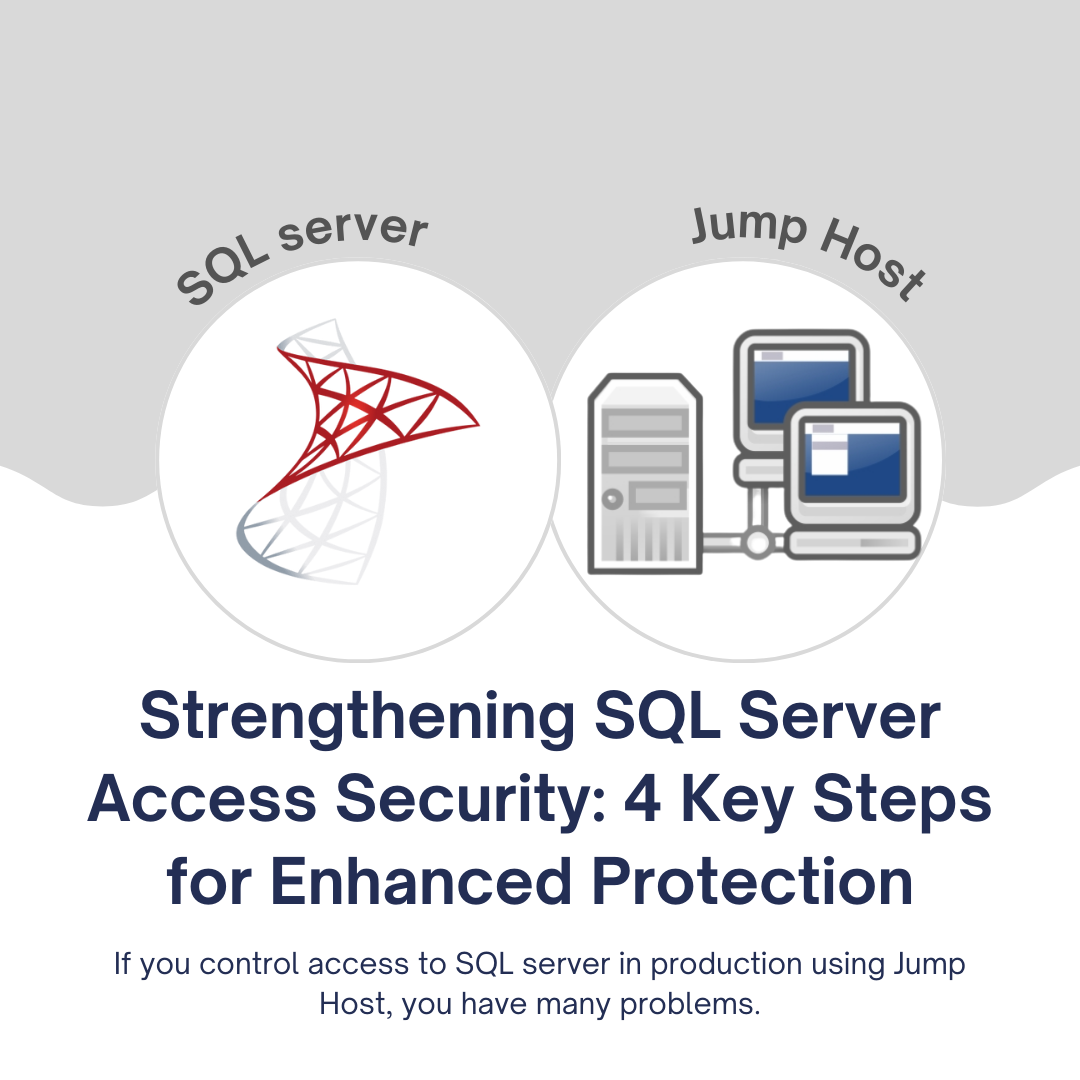Strengthening SQL Server Access Security: 4 Key Steps for Enhanced Protection

Introduction
Managing access to SQL Server in production environments through a Jump Host can be a complex and challenging task. This approach is often chosen for its security benefits, but it can also introduce various problems. In this article, we will discuss the five major issues associated with Jump Host access to SQL Server, their potential impacts, and provide actionable steps to mitigate these challenges. We'll explore how implementing Single Sign-on (SSO) and Multi-Factor Authentication (MFA), ensuring proper audit trails and PII protection, complying with industry regulations, and optimizing developer experience can significantly enhance SQL Server access security.
1. Understanding the Challenges
Fast Access is Critical
Fast access to the right engineers in production is crucial for maintaining product speed, troubleshooting, bug fixes, and incident resolution. However, inefficient access management can lead to security risks and workflow inefficiencies.
Hidden Vulnerabilities
Hidden vulnerabilities often lurk within your Jump Host-based access management system, making it susceptible to attacks and compliance issues. These vulnerabilities include:
a. Single Sign-on & MFA: Lack of robust authentication methods exposes the system to unauthorized access.
b. Audit Trials and PII Protection: Inadequate audit trails can compromise data integrity and expose sensitive information.
c. Compliance: Non-compliance with industry regulations such as GDPR, PCI, SOC2, and HIPAA can result in legal consequences and data breaches.
d. Developer Experience: Cumbersome workflows hinder productivity and create resistance among users.
2. Implementing Solutions
Adopt the 80/20 Rule
Implementing solutions to address these vulnerabilities doesn't have to be overwhelming. Follow the 80/20 rule to prioritize and gradually introduce key features:
a. Add SQL Server to Existing Systems: Leverage tools you already use, such as Google Workspaces, to simplify the integration of SSO and MFA.
b. Simplify SSO: Don't overcomplicate SSO implementation; use Google OAuth as a straightforward solution.
c. Prioritize Features: Tailor your approach based on industry requirements. Focus on Developer Experience, SSO, and MFA if compliance is less critical. For highly regulated industries, prioritize compliance features.
3. Reducing Complexity
Leverage Comprehensive Solutions
To streamline access management, consider using tools that can handle not only SQL Server access but also other databases, cloud providers, Kubernetes, servers, and more. This reduces complexity and enhances efficiency by centralizing access control.
a. Centralize Access Management: Opt for tools like Runops that can handle multiple use cases within a single platform, even if it means sacrificing a slightly worse user experience.
4. Adding Friction to Unwanted Access Methods
Balancing Security and Convenience
In some cases, teams may resort to easy but insecure access methods. To encourage the adoption of more secure practices, consider adding friction to these unwanted access routes:
a. Introduce Form Submission: If an insecure method is currently the fastest, you can add a form submission step to the process. This creates an incentive for users to opt for the more secure approach.
b. Gradual Restriction: For commonly used but less secure methods, such as accessing the AWS web console instead of automated Infrastructure as Code (IaC) pipelines, gradually restrict access by requiring requests through platforms like Jira. Over time, improve the secure method's user experience to encourage compliance.
Conclusion
Securing SQL Server access via a Jump Host is a crucial aspect of maintaining data integrity and complying with industry regulations. By addressing hidden vulnerabilities, adopting the 80/20 rule, centralizing access management, and strategically adding friction to unwanted access methods, organizations can significantly enhance their SQL Server access security while balancing convenience and compliance. Prioritizing these steps will ultimately lead to a more secure and efficient production environment.
